What Does a Lighting Designer Do?
Three experts shine a light on the process, from initial consultation to completion
Good lighting design is an art. It brings out the best in an interior design scheme, illuminates architectural features, creates atmosphere and makes practical household tasks easier. In the hands of an expert, it can be truly transformative. Here’s what to consider if you’re thinking of hiring.
Professional advice from: Toria Thorpe of Lighting by Plum; Neil Tomkinson of Lumen Designers; Sian Baxter of Sian Baxter Lighting Design
Professional advice from: Toria Thorpe of Lighting by Plum; Neil Tomkinson of Lumen Designers; Sian Baxter of Sian Baxter Lighting Design
What types of lighting will good designers have in their armoury?
Lighting schemes include a mix of ambient (general), task (functional) and accent (drama/character) lighting, and the balance and interplay between these will depend on the space, and on how it will be used and by whom.
The more knowledge a lighting designer has of the products and technologies available, the more imaginative and flexible they can be in the schemes they design for you.
Some lighting designers are tied to their own lighting products, while others are independent. “Ask any potential designer if they’re restricted in their use of product ranges or brands,” Neilsays, and tap into their knowledge when it comes to product selection. “Most have their favourite suppliers, because they know they’re reliable in terms of quality, supply and so on,” he adds.
Using an independent lighting designer has advantages. “As an independent, I can be objective when recommending which lights would work in a particular scheme,” Sian says.
There are other positives, too, Toria says. “Being unrestricted by what we specify makes it easier for us to adapt to any budget.”
Lighting schemes include a mix of ambient (general), task (functional) and accent (drama/character) lighting, and the balance and interplay between these will depend on the space, and on how it will be used and by whom.
The more knowledge a lighting designer has of the products and technologies available, the more imaginative and flexible they can be in the schemes they design for you.
Some lighting designers are tied to their own lighting products, while others are independent. “Ask any potential designer if they’re restricted in their use of product ranges or brands,” Neilsays, and tap into their knowledge when it comes to product selection. “Most have their favourite suppliers, because they know they’re reliable in terms of quality, supply and so on,” he adds.
Using an independent lighting designer has advantages. “As an independent, I can be objective when recommending which lights would work in a particular scheme,” Sian says.
There are other positives, too, Toria says. “Being unrestricted by what we specify makes it easier for us to adapt to any budget.”
How does the process of designing a lighting scheme work?
“Normally, I’d prepare a fee proposal or quote based on architectural drawings of the property,” Sian says.
Once this has been accepted, a concept design follows, based on layout details, client requirements, time frames and budget. Once approved, a second, more detailed design is reviewed and approved, before being handed over to an electrician.
Toria has developed a six-stage process for residential lighting work following an initial free consultation: concept and ideas generation, which includes product demonstrations; a design that works up the concept; a further design that integrates the scheme into the property’s architecture; quotes and ordering equipment; on-site assistance and contractor liaison and, finally, a follow-up to ensure customer satisfaction.
“Normally, I’d prepare a fee proposal or quote based on architectural drawings of the property,” Sian says.
Once this has been accepted, a concept design follows, based on layout details, client requirements, time frames and budget. Once approved, a second, more detailed design is reviewed and approved, before being handed over to an electrician.
Toria has developed a six-stage process for residential lighting work following an initial free consultation: concept and ideas generation, which includes product demonstrations; a design that works up the concept; a further design that integrates the scheme into the property’s architecture; quotes and ordering equipment; on-site assistance and contractor liaison and, finally, a follow-up to ensure customer satisfaction.
What does an initial consultation involve?
A first meeting is likely to take an hour or so and involves the lighting designer explaining how he or she works and you outlining what you have in mind for your budget.
“Unlike interior design, lighting design is generally more advisory than consultative,” Sian says. “This is because the interior layout and structural details of the property will drive the lighting design to a large degree.”
Don’t worry if you have difficulty expressing exactly what you want in terms of lighting – that’s what a lighting designer’s there for. “Clients will often say things such as ‘I need my pottery collection to be lit’ or ‘I want the gym to become a party room at night’,” Sian says. A good lighting designer will be able to suggest different ways these can be achieved.
Larger projects that involve working with professional clients will work differently, though. “Where the lighting is integral to the very design of the project, the interior design will be developed in line with the lighting,” Sian says.
A first meeting is likely to take an hour or so and involves the lighting designer explaining how he or she works and you outlining what you have in mind for your budget.
“Unlike interior design, lighting design is generally more advisory than consultative,” Sian says. “This is because the interior layout and structural details of the property will drive the lighting design to a large degree.”
Don’t worry if you have difficulty expressing exactly what you want in terms of lighting – that’s what a lighting designer’s there for. “Clients will often say things such as ‘I need my pottery collection to be lit’ or ‘I want the gym to become a party room at night’,” Sian says. A good lighting designer will be able to suggest different ways these can be achieved.
Larger projects that involve working with professional clients will work differently, though. “Where the lighting is integral to the very design of the project, the interior design will be developed in line with the lighting,” Sian says.
What different levels of service do lighting designers offer?
Lighting design can run from a simple plan for you to hand to your electrician to a full-on design, installation and project management service.
“A scheme involving a basic lighting layout with no calculations and just a few lights added to a simple plan is usually fine for a small, three-bedroom house,” Neil says. “The lighting designer is typically only engaged at the start of a project like this.”
At the other end of the scale is the complete design service. This will involve CAD plans, full lighting and controls schedules with operational setting notes for larger-scale projects that have cinema rooms or ‘scene setting’ requirements in living and dining areas.
“The lighting designer is involved at the beginning and end of this sort of project,” Neil says, “as well as at key stages throughout the build.”
Lighting design can run from a simple plan for you to hand to your electrician to a full-on design, installation and project management service.
“A scheme involving a basic lighting layout with no calculations and just a few lights added to a simple plan is usually fine for a small, three-bedroom house,” Neil says. “The lighting designer is typically only engaged at the start of a project like this.”
At the other end of the scale is the complete design service. This will involve CAD plans, full lighting and controls schedules with operational setting notes for larger-scale projects that have cinema rooms or ‘scene setting’ requirements in living and dining areas.
“The lighting designer is involved at the beginning and end of this sort of project,” Neil says, “as well as at key stages throughout the build.”
Do lighting designers only work on new-builds and refurbishments?
“Normally, yes, as rewiring is quite disruptive,” Sian says. “Lighting design needs to be done early in the process, as it has to be completed and approved by the client before the ‘first fix’ [when internal walls are plastered].”
Toria adds, “We will work on any project at any stage, from as early as when Planning Permission is granted up to the first fix.”
It’s in your interest to involve a lighting designer as early as possible. “Adding control cables after the ceiling has been closed up, for example, is far more costly than before the plasterboard’s installed,” Neil says.
“Normally, yes, as rewiring is quite disruptive,” Sian says. “Lighting design needs to be done early in the process, as it has to be completed and approved by the client before the ‘first fix’ [when internal walls are plastered].”
Toria adds, “We will work on any project at any stage, from as early as when Planning Permission is granted up to the first fix.”
It’s in your interest to involve a lighting designer as early as possible. “Adding control cables after the ceiling has been closed up, for example, is far more costly than before the plasterboard’s installed,” Neil says.
Can lighting designs be retrofitted into homes without too much disruption?
Recent advances in technology are making retrofits easier than they used to be. “There are ways to minimise disruption,” Toria says. “Wireless control systems can make it easy to split up existing circuits.”
However, it’s not always straightforward and will involve compromises. “There are solutions that can be operated by a mobile device that only require small smart boxes to be installed in the lighting circuits,” Neil says, “but you have to ensure the lamps are compatible with the controls.
“If conditions are right,” he says, “you can add a lot of functions for very little cost – but the existing lighting points may not be in the right places.”
Search for professionals to transform your home in the Houzz Directory.
Recent advances in technology are making retrofits easier than they used to be. “There are ways to minimise disruption,” Toria says. “Wireless control systems can make it easy to split up existing circuits.”
However, it’s not always straightforward and will involve compromises. “There are solutions that can be operated by a mobile device that only require small smart boxes to be installed in the lighting circuits,” Neil says, “but you have to ensure the lamps are compatible with the controls.
“If conditions are right,” he says, “you can add a lot of functions for very little cost – but the existing lighting points may not be in the right places.”
Search for professionals to transform your home in the Houzz Directory.
Is any job too small for a lighting designer?
“Our philosophy is that you can use us for an hour if you wish, so no job is too small,” Toria says. “We believe everyone should have access to good lighting.”
Sian agrees. “The smallest job I’ve done was a cloakroom in a house.”
It can depend on the designer and the type of work they usually take on, though. “As a larger design practice, we tend not to work on residences with fewer than five bedrooms,” Neil says, “because we don’t offer simpler schemes.
“Other designers offer these, though,” he adds, “and they can be a great way to engage a professional at a local level without too much cost.”
“Our philosophy is that you can use us for an hour if you wish, so no job is too small,” Toria says. “We believe everyone should have access to good lighting.”
Sian agrees. “The smallest job I’ve done was a cloakroom in a house.”
It can depend on the designer and the type of work they usually take on, though. “As a larger design practice, we tend not to work on residences with fewer than five bedrooms,” Neil says, “because we don’t offer simpler schemes.
“Other designers offer these, though,” he adds, “and they can be a great way to engage a professional at a local level without too much cost.”
What about sustainability, energy usage and environmental issues?
These are elements that both you and your lighting designer need to be mindful of. “Light sources need to be energy-efficient,” Sian says, “and ideally the component parts and materials should be biodegradable and ethically sourced.”
Choosing products that haven’t travelled the globe several times and that will outlast the decorating cycle is important, Neil says, “as well as exterior lights that won’t pollute the skies.”
Shop lighting on Houzz.
These are elements that both you and your lighting designer need to be mindful of. “Light sources need to be energy-efficient,” Sian says, “and ideally the component parts and materials should be biodegradable and ethically sourced.”
Choosing products that haven’t travelled the globe several times and that will outlast the decorating cycle is important, Neil says, “as well as exterior lights that won’t pollute the skies.”
Shop lighting on Houzz.
If I’m looking to hire a lighting designer, where do I start?
“Search online, check out sites such as Houzz, and [ask for] recommendations,” Sian says. “Look for a lighting designer who has a lot of experience in the same type of project as yours.”
It can also be good to look at designers who’ve worked on larger projects, Neil says, “and remember that individual designers don’t always have the time to update websites, but most will have images of their designs they can send to you if you ask.”
Recommendations are crucial, Toria says. “Search residential lighting design in your area. Good lighting designers can be found via local personal recommendations.”
“Search online, check out sites such as Houzz, and [ask for] recommendations,” Sian says. “Look for a lighting designer who has a lot of experience in the same type of project as yours.”
It can also be good to look at designers who’ve worked on larger projects, Neil says, “and remember that individual designers don’t always have the time to update websites, but most will have images of their designs they can send to you if you ask.”
Recommendations are crucial, Toria says. “Search residential lighting design in your area. Good lighting designers can be found via local personal recommendations.”
What qualifications should a lighting designer have?
Depending on the scale of your project, experience might be more, or equally as, important as qualifications. Some lighting designers may also have degrees in product design or interior design.
Keeping up to date with industry innovations is crucial, Neil says. “If a designer’s not familiar with developments, they’ll be out of touch with the latest systems and designs. They should know the regulations and the implied regulations around health and safety and have at least a basic understanding of lighting controls.”
“For residential projects, qualifications aren’t critical,” Sian says, “but experience, a proven track record and an innate feeling for light are important.”
Toria agrees. “It’s important to look for someone used to dealing with residential lighting who has images of previous projects along with recommendations and testimonials.”
Depending on the scale of your project, experience might be more, or equally as, important as qualifications. Some lighting designers may also have degrees in product design or interior design.
Keeping up to date with industry innovations is crucial, Neil says. “If a designer’s not familiar with developments, they’ll be out of touch with the latest systems and designs. They should know the regulations and the implied regulations around health and safety and have at least a basic understanding of lighting controls.”
“For residential projects, qualifications aren’t critical,” Sian says, “but experience, a proven track record and an innate feeling for light are important.”
Toria agrees. “It’s important to look for someone used to dealing with residential lighting who has images of previous projects along with recommendations and testimonials.”
What can today’s smart technology offer in terms of lighting?
“Technology is advancing so quickly that we can now use lighting for communicative purposes, such as Li-Fi or light fidelity [high-speed, light-wave wireless communication],” Neil says.
This can be controlled from a mobile app or via a web-connected assistant such as Alexa, though there are persistent concerns around network security that need to be addressed.
“I’m also excited by the reduction in the physical size of light sources,” Neil adds, “and the flexibility this could offer to all of us in terms of design.”
Read more:
Lighting Faux Pas: Don’t Make These Mistakes With Your LightsA Guide to Lighting Your Home
Tell us:
Have you recently used a lighting designer to help revamp or refurbish your home? Share your experiences in the Comments section.
“Technology is advancing so quickly that we can now use lighting for communicative purposes, such as Li-Fi or light fidelity [high-speed, light-wave wireless communication],” Neil says.
This can be controlled from a mobile app or via a web-connected assistant such as Alexa, though there are persistent concerns around network security that need to be addressed.
“I’m also excited by the reduction in the physical size of light sources,” Neil adds, “and the flexibility this could offer to all of us in terms of design.”
Read more:
Lighting Faux Pas: Don’t Make These Mistakes With Your LightsA Guide to Lighting Your Home
Tell us:
Have you recently used a lighting designer to help revamp or refurbish your home? Share your experiences in the Comments section.



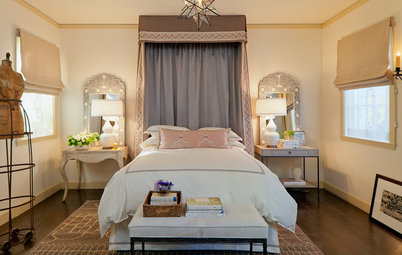
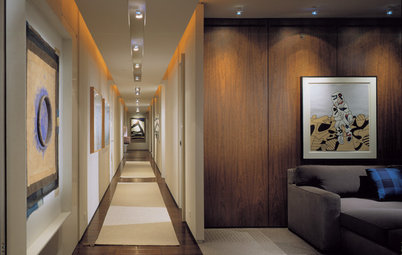
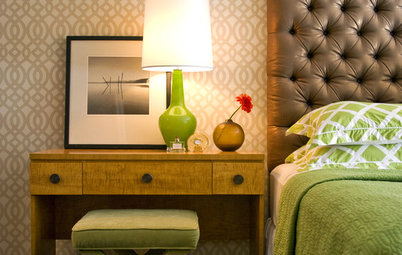
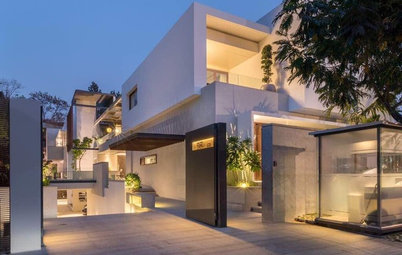
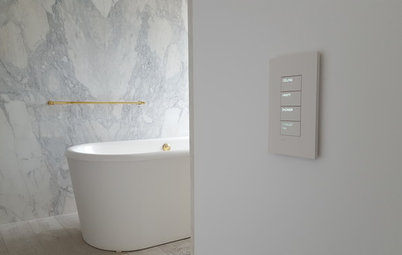
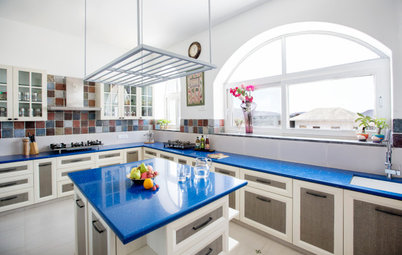
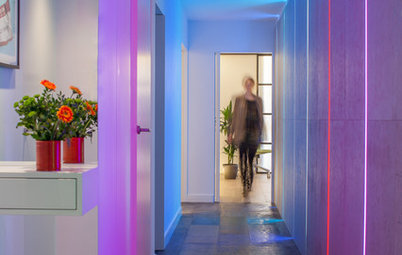
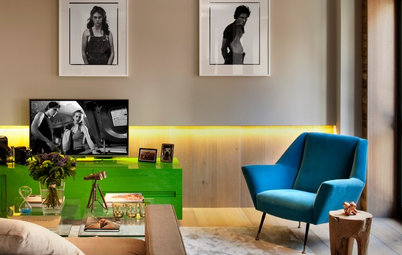
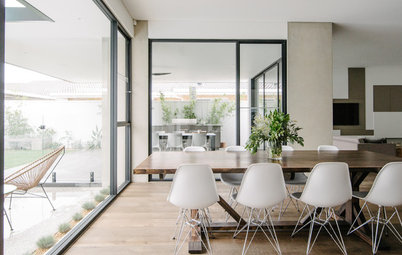
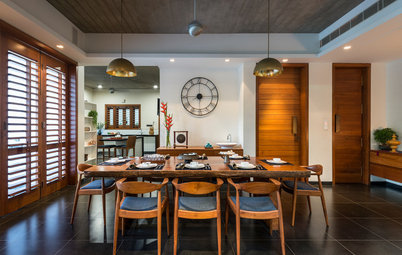
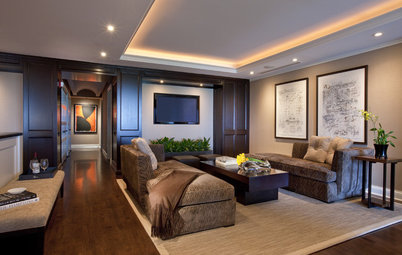
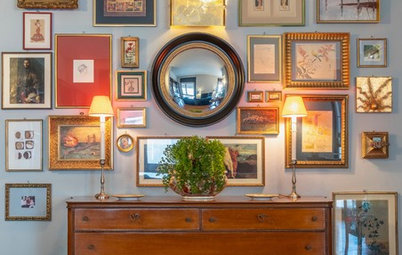
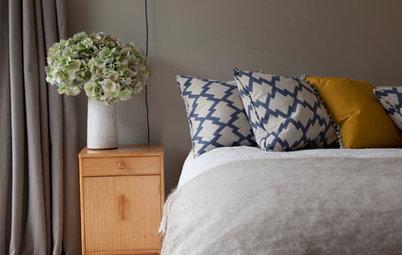
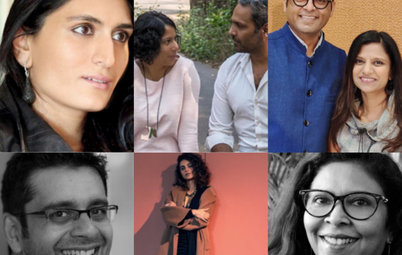
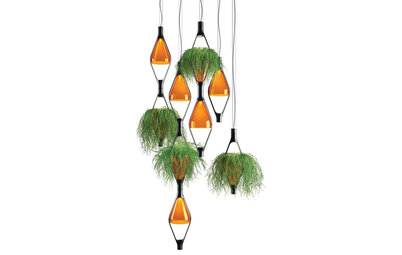
A lighting designer is a specialist. In broad terms, an interior designer will tend to prioritise the look of a product; an architect its function. A lighting designer will have both considerations front of mind.
“The job of the lighting designer is to ensure a home is lit correctly, economically and with design features where required and simplicity everywhere else,” Neil Tomkinson says.
“While other professionals will be able to provide a simply lit environment,” Toria Thorpe explains, “lighting designers will dress it with light.” Lighting has become increasingly complex and requires specialist knowledge, she says. “Good lighting designers will know about the latest products and the effects they can create.”
“I often work with both an interior designer and an architect on projects,” Sian Baxter says, “all of us focusing on the areas we do best.”